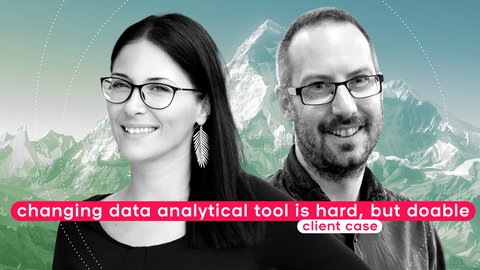These days, you won’t find many newsrooms that don’t use data tools. What happens when you want to switch to another tool? It’s not always simple, and there are often objections or complicating factors.
We had devised a step-by-step plan to help decision-makers in newsrooms make the transition as smooth as possible, but we understand that it’s not a matter of 1-2-3 and you’re where you want to be.
Maybe you recognise your own reservations in the five common issues we hear about often. Usefully there are work-arounds.
The current tool does not meet expectations, but there’s still a contract to honour
It often happens that you are still bound by a contract. In such cases, the question is whether switching is a cheaper solution than waiting out the contract. Ask yourself if the tool you are still committed to is being utilised enough. If not, there are two options:
- Invest in training and convincing colleagues to use it
- Or make a strong case for switching to a tool that the newsroom seemingly needs more and fits better with the editorial workflow - and take the hit of paying for two tools until the contract expires.
Aleksandra Radivojevic, Coordinator of Support and Success at smartocto, frequently sees that a tool doesn’t fit the newsroom’s workflow. "A client of ours left a while ago because they found a cheaper tool elsewhere. They switched, but after six months, they returned to us. The data software they now had was hardly used. It didn’t fit the newsroom’s habits. In such cases, waiting out a contract is a waste."
The fear that the tool won’t be used enough
Suppose you’ve moved heaven and earth to get smartocto as your new data tool, and then it’s not used at all? A lot of effort will have been for nothing, and you’ll still be paying a hefty fee.
At smartocto, we aim to alleviate this concern by investing heavily in our onboarding process. That’s why we often work with POCs, or proof of concepts. This is a short test period in which you can check if the software resonates within the organisation. If it doesn’t, you can still opt out of a longer contract.
When you have your first onboarding call make sure you consider the following:
- Are all conditions present to make the adoption of this new tool successful?
- What are your growth-related goals?
- What’s the business goal?
- Are your managers on board and motivated?



